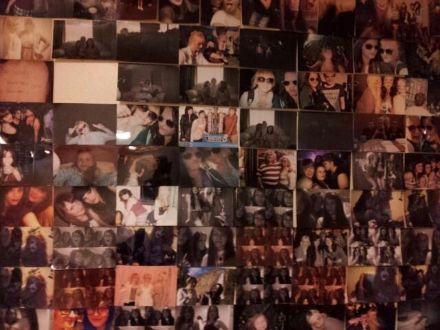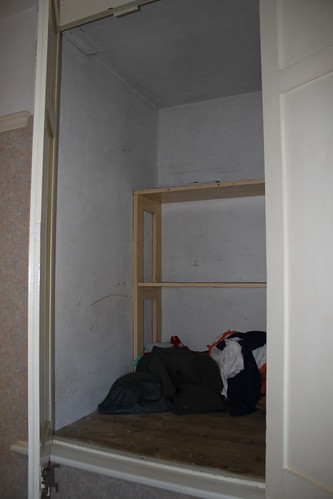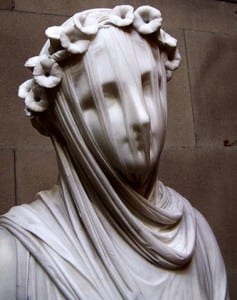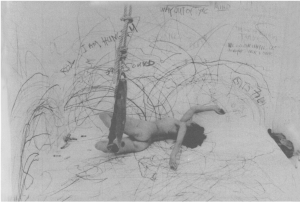How far can you change something to make it a distant reality?
Changing the impression of a room can be difficult because it relies heavily on audience interpretation and so their own individual associations. This is quite stimulating because it enables you as a performer to set up a base foundation for the audience to explore and almost create their own performance.
At what point does a performance become personal?
Sound is a powerful tool for engagement and as a performer, through experimentation, I found that certain sounds placed together in different ways evoked contrasting feelings and emotions. The time in the performance when feelings and individual thoughts and memories come to the forefront of your mind is the main focus of my work and so the other sections of the environment only supports this.
“DoMA/at Home is a meta-theatrical performance project which explores everyday living spaces using a combination of theatre, performance, fine art and movement, along with a strong emphasis on games and involvement of the audience in the process”. ((Lotker, Howard (2006) Divadlo HoME online: http://blackboard.lincoln.ac.uk/webapps/portal/frameset.jsp?tab_tab_group_id=_2_1&url=%2Fwebapps%2Fblackboard%2Fexecute%2Flauncher%3Ftype%3DCourse%26id%3D_67088_1%26url%3D (accessed March 2013.) )).
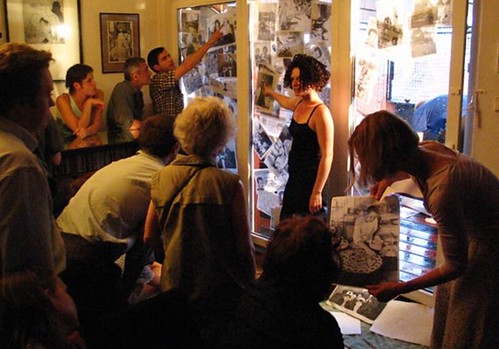

(Home, DoMA/at home sourced: http://www.divadlohome.net/shows/doma_gallery.html (accessed 13th April 2013))
Throughout this performance the audience are going to be aware that they are watching or being involved in a performance, especially with the specific cliental that this site specific work interests, however, it’s the ability to get the audience so lost in their own world through distraction and distortion that makes the performance truthful. Involvement of the audience in a main theme in my work and so I intend to not only involve them physically using headphones but also in their own performance of their thoughts and ideas will be individual, giving them a strong connection with the piece and therefore hopefully leaving my space feeling confused and not in control of their ideas.
“There are constant surprises and interesting questions raised about: borders, cultures, what is art (and how is it different or the same as real life), and about what home means to us” ((Lotker, Howard (2006) Divadlo HoME online: http://blackboard.lincoln.ac.uk/webapps/portal/frameset.jsp?tab_tab_group_id=_2_1&url=%2Fwebapps%2Fblackboard%2Fexecute%2Flauncher%3Ftype%3DCourse%26id%3D_67088_1%26url%3D (accessed March 2013.) )).
Questioning of the art is also a critical engagement tool in my work and so I want my audience to be constantly questioning themselves and question what they are doing and so hopefully the art is reinforced and justified by individual opinions and ideas. Below is a review of the DoMA performance in which audience maintained the feelings after the performance had ended.
“They explored the apartments and improvised in unconventional ways. The evening is at an end, but afterwards you go away imbued with this intoxicating atmosphere which penetrates you, and for a long time afterwards you will carry with you the gratifying and unrepeatable feeling of this performance” ((Gráfová, Tifka (2005) An Evening of Voyeurism and Sweet Intoxication online: http://blackboard.lincoln.ac.uk/webapps/portal/frameset.jsp?tab_tab_group_id=_2_1&url=%2Fwebapps%2Fblackboard%2Fexecute%2Flauncher%3Ftype%3DCourse%26id%3D_67088_1%26url%3D (accessed 18th March 2013.) )).
Collaborative soundscape experimentation…
Experimenting with sound and the notion of manipulation sets an instant confusion and disassociation. They ask themselves….What am I listening to? Why am I listening? But as the sound plays certain sounds become more obvious and due to the environment some links begin to appear, but having said that, some sounds remain unknown. The unknown sounds are what may make the audience think and question the sources. All the sounds are recorded on site and are kitchen sounds but the level of editing and manipulation on certain noises may start to create different sounds by use of experimentation. The tester above is one of my first ideas solely as experimentation. As you can hear some sounds are obvious, some not so obvious and the tense and unsettling notion that something is that close to your head I feel puts you on edge.
(Tinley, Andrew (2013) Soundscape Tester 1 online: https://soundcloud.com/andrewtinley2012-1/tester-sound-scape-1-mp3/s-5w3fx (accessed 18th March 2013).
I decided to use headphones during this section so that the audience are unable to escape from the performance. This, due to the fact there are only two audience members with two separate headphones on, raises the question – Are they listening to the same soundscape? This question makes the space much more dynamic and creates a notion of isolation inside your head. This is a positive feeling in terms of my performance because I want each audience member to receive a different individual experience.
The kitchen as a space is quite familiar to use all so completely turning that notion on its head and making audience members enter a completely transformed space with subtle kitchen links may put them at unease. This feeling of tension and potential unknowing helps the space deliver its own characteristics because initially the audience may start thinking with the kitchen in the mind but as the performance goes on I do believe that those opinions and thoughts may get transformed and battled against due to their own personal associations and ideas.
